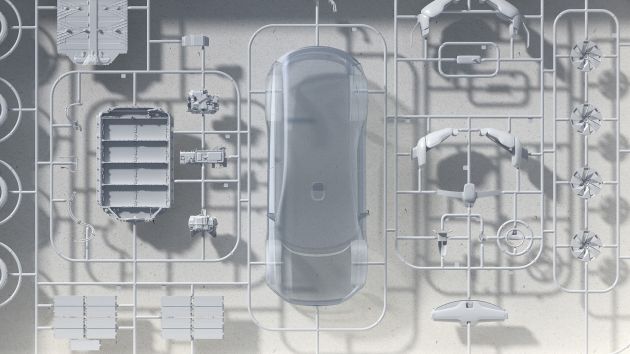Volvo is on the cusp of a revolution, promising to sell only pure electric vehicles by 2030. To that end, the company is revealing its technology roadmap later today, outlining the components that will form the basis for its next-generation models, which will all emit zero emissions.
While more details will be announced in the live broadcast from Gothenburg, the Swedish carmaker has already confirmed it aims to double the range of its current electric vehicles, which currently stands at 420 km for the new C40 Recharge. It also wants its future cars to allow for much faster charging and be cheaper to own and charge. All in all, Volvo is targeting at least half of the 1.2 million cars it plans to sell globally by the middle of the decade to be fully electric.
By then, it will have an annual operating margin of between eight and ten per cent, it said, driven by increased sales and revenues, more effective sales and distribution channels, greater affiliate synergies and a wider range of electric cars. The company is also expecting electrified vehicles to achieve gross margin parity with their petrol- and diesel-powered counterparts, further boosting profitability.
With its new models, Volvo will switch to Nvidia core computing power, develop its software in-house and focus on shorter development cycles – actions that reflect “the growing role of software as a differentiator for the car of the future and a driver of profitable growth.” The company said that this is a clear departure from the long-dominant industry practice of static development, enabling increased flexibility, quicker development speeds and a more immediate over-the-air rollout of new services, tech and software.
Volvo already confirmed last week that all next-gen models will come with Luminar lidar sensors as standard, starting with the new XC90, to ensure that they are ready for fully-autonomous driving. It will also look into “harnessing the power of real-time data” to continuously improve the safety of its vehicles.
While the software that will power and eventually drive its cars will be written in-house, Volvo will continue its partnership with Google on the infotainment side. The tech giant already provides an Android-based operating system for Volvo’s latest models, and the next-gen version will offer a “simple, serene and safe experience” and a seamless integration between the cars and Google’s ecosystems.
To promote the livestream, Volvo released a couple of images of neat Tamiya-esque sprues, showcasing a number of future vehicle components model kit style. One of those parts is a large SUV body that looks suspiciously like a concept for the new XC90, replete with the aforementioned lidar sensor on the roof.
Those images show a sleeker, cleaner design that even the relatively pared-back styling of the outgoing model, with sharper creases, an upswept beltline, deep cuts along the sides, an in-vogue “floating roof” design and slim L-shaped taillights. Of course, this could simply be an stylised model instead of a specific future model – we’ll just have to wait and see.
The post Volvo to outline future technology strategy today – all next-generation cars to be electric; new XC90 teased? appeared first on Paul Tan's Automotive News.



0 Comments